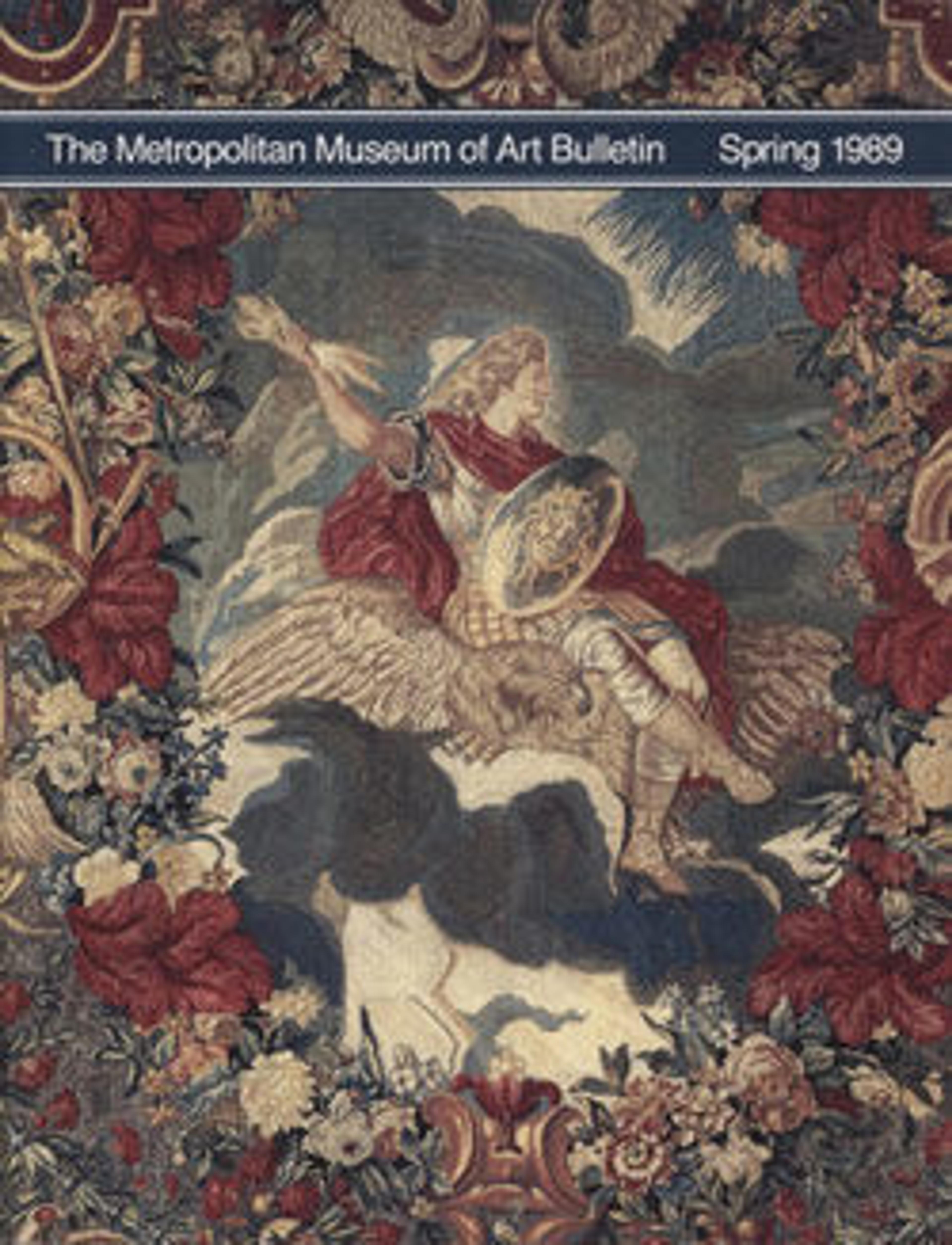Ewer with the arms of the couple Jérôme de Lestang (1676-1700) and Marie Le Floch (1680-1734)
This simple graceful ewer is of the helmet type that evolved at Louis XlV’s court. The form, based on an inverted classical helmet, became a popular model in French silver by the 1690’s.
Ewers and basins had been in use since the fourteenth century, principally for the dining table. It was the custom for a diner’s hands to be washed both before and during the meal. While one servant held the basin, another poured the water. As the use of forks by individual diners increased, this practice became less common.
This ewer, made in Paris in 1699/1700, would have originally been accompanied by an oval basin. It could also have been part of a toilet service.
The three sumptuary edicts issued by Louis XlV in 1689, 1699, and 1709 led to the melting down of vast quantities of gold and silverware in order to mint new coinage and replenish the state treasury. It was also one of the factors leading to the development of ceramic manufacturing in France. The models of silver were used for faience and helmet-shaped ewers were made in various faience manufactories. (see 17.190.1764 and 58.60.14)
Daughter of one of the founders of the Weyerhaeuser Timber Company, Catherine D. Wentworth (1865-1948) was an art student and painter who lived in France for thirty years. She became one of the most important American collectors of eighteenth-century French silver and on her death in 1948 bequeathed part of her significant collection of silver, gold boxes, French furniture and textiles to the Metropolitan Museum. The collection is particularly strong in domestic silver, much of it provincial, and includes a number of rare early pieces.
Ewers and basins had been in use since the fourteenth century, principally for the dining table. It was the custom for a diner’s hands to be washed both before and during the meal. While one servant held the basin, another poured the water. As the use of forks by individual diners increased, this practice became less common.
This ewer, made in Paris in 1699/1700, would have originally been accompanied by an oval basin. It could also have been part of a toilet service.
The three sumptuary edicts issued by Louis XlV in 1689, 1699, and 1709 led to the melting down of vast quantities of gold and silverware in order to mint new coinage and replenish the state treasury. It was also one of the factors leading to the development of ceramic manufacturing in France. The models of silver were used for faience and helmet-shaped ewers were made in various faience manufactories. (see 17.190.1764 and 58.60.14)
Daughter of one of the founders of the Weyerhaeuser Timber Company, Catherine D. Wentworth (1865-1948) was an art student and painter who lived in France for thirty years. She became one of the most important American collectors of eighteenth-century French silver and on her death in 1948 bequeathed part of her significant collection of silver, gold boxes, French furniture and textiles to the Metropolitan Museum. The collection is particularly strong in domestic silver, much of it provincial, and includes a number of rare early pieces.
Artwork Details
- Title:Ewer with the arms of the couple Jérôme de Lestang (1676-1700) and Marie Le Floch (1680-1734)
- Maker:attributed to Jean Villeclair (French, master 1692)
- Date:1698–99
- Culture:French, Paris
- Medium:Silver
- Dimensions:Height: 10 3/4 in. (27.3 cm)
- Classification:Metalwork-Silver
- Credit Line:Bequest of Catherine D. Wentworth, 1948
- Object Number:48.187.19
- Curatorial Department: European Sculpture and Decorative Arts
More Artwork
Research Resources
The Met provides unparalleled resources for research and welcomes an international community of students and scholars. The Met's Open Access API is where creators and researchers can connect to the The Met collection. Open Access data and public domain images are available for unrestricted commercial and noncommercial use without permission or fee.
To request images under copyright and other restrictions, please use this Image Request form.
Feedback
We continue to research and examine historical and cultural context for objects in The Met collection. If you have comments or questions about this object record, please contact us using the form below. The Museum looks forward to receiving your comments.
